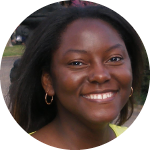Infusing Diverse Voices and Perspectives Across Disciplines
As society becomes more globally aware, so does the classroom.

As society becomes more globally aware, so does the classroom. Cultural exchange and interconnectivity have increasingly changed how we think about diversity in the classroom. Students have expressed a desire to see people from diverse backgrounds in their fields of study beyond traditional Western, white males. This isn’t to say that traditional Western figures aren’t important, but it is necessary to show that the field of study is not comprised of a homogenous few. So, why is it important to include diverse voices in our classroom?
We can go down a rabbit hole to discover and explain why diverse perspectives are important across disciplines. But a few that we can focus on are engagement, perspectives, and scholarship.
Engagement—Not every student “sees” themselves in many fields of study. When they see someone who shares a similar background or trait, it can increase engagement from that student.
Perspectives—Integrating diverse voices allows us to see the world from a different perspective. Look at math. How did you learn it? The quick way or the long way that explains the “why” behind it? Both will give you the same answer, but they allow you to look at math from more than one perspective.
Scholarship—We must continue to expand our knowledge as instructors and students. It also allows us to understand the world from a perspective we have not considered. In art, we can look at art from just about any perspective. Looking at it from a philosophical view will be different from a historical view, as well as from an artist’s point of view.
Now you might be wondering, how do you do this in your specific discipline? Start small and focus on an area that interests you or start with a few of the suggestions listed below.
Mathematics—When discussing math problems, give the history of their development and “who” uses them. The easiest place to look, besides mathematics, is the science and health fields. Neil deGrasse Tyson, an astrophysicist, talks about space and Earth from various perspectives in his StarTalk series on YouTube. He inserts history, mathematics, philosophy, as well as other discipline topics into his discussions.
Math and Arts—If you’re trying to capture the attention of those who question their place in mathematics, show them Chawne Kimber who’s not only a mathematician but also an artist who uses quilting to address social issues.
Science or Social Sciences—Talithia Williams, a mathematician, uses statistics to understand the human body, and gives us practical application of statistics in the real world. Amartya Sen, an economist, uses economics to explore the connection between poverty and policies with a particular focus on India. Temple Grandin, animal behaviorist and advocate for understanding autism, has used her platform to dismiss archaic ideas about autism.
History—Art and music can easily be incorporated. But look at the animator Hayao Miyazaki. He addresses social concerns in his animations such as the environment and war. Grave of Fireflies, based on a short semi-autobiography, looks at World War II through the eyes of young children. (Have a box of tissue ready, if you watch this one.)
These are just a few people to start with. The goal isn’t to erase voices; it’s to add diverse perspectives that can help engage learners.


